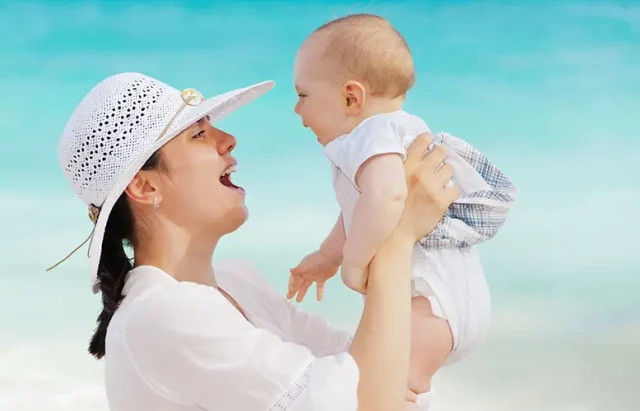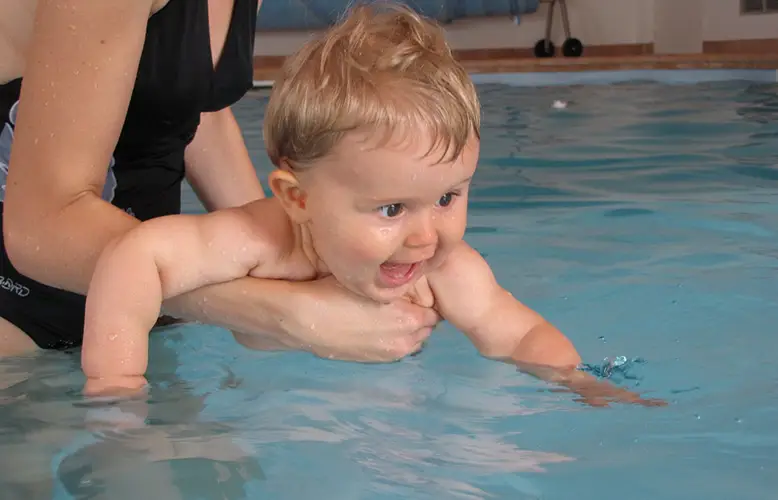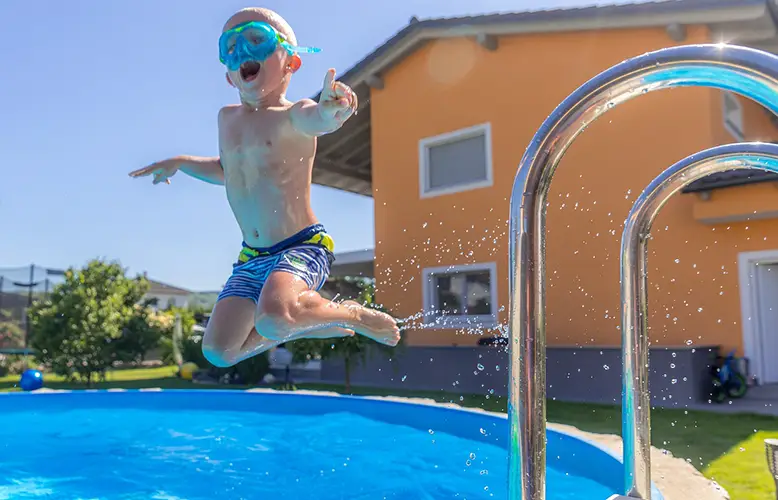
Children who don’t know how to swim face higher risks when near pools, lakes, or the ocean — environments that are often part of summer vacations. Teaching kids to swim before vacation isn’t just a useful idea; it’s a practical step for improving safety and reducing stress for both children and parents.
According to the CDC, drowning is the leading cause of injury death for children ages 1 to 4 in the United States. The presence of a body of water on holiday — whether at a hotel pool or beach — increases that risk significantly. Enrolling a child in kids swimming lessons before the trip can help reduce this risk.
The Main Benefits of Pre-Vacation Swimming Lessons
1. Water Safety Improves Immediately
Basic skills like floating, turning onto the back, and moving toward the pool wall can often be introduced in just a few sessions. Many swimming classes for children focus specifically on water safety, not just strokes or technique. This includes understanding boundaries, obeying pool rules, and learning how to call for help.
2. Children Become More Confident Around Water
Children who start lessons early tend to develop a more relaxed attitude toward swimming and water in general. This helps reduce panic during water play or even in accidental situations. Even small milestones — like putting the face in the water or learning to kick — can reduce fear.
3. Less Parental Anxiety
For parents, a child’s ability to stay calm and respond in the water lowers the constant need for supervision. While this doesn’t remove the need for attentive parenting around water, it can reduce the level of stress and allow families to enjoy vacation time more.
How Early Should Swim Lessons Begin?

The American Academy of Pediatrics recommends starting formal swimming lessons at age 1, depending on the child’s emotional and physical development. For vacation readiness, starting lessons at least 4 to 8 weeks in advance of travel is recommended. This window allows time to build core skills such as breath control, floating, and safe entry and exit.
For parents wondering about the best age to start swim lessons, the earlier the exposure, the more familiar the child becomes with water. Children who begin before age 5 often show faster progression later on.
What to Look for in a Swim Program
When selecting a swim program before a vacation, it’s important to choose one that prioritizes safety, instruction quality, and child comfort.
Checklist for selecting a swim program:
- Instructors certified in child CPR and water safety
- Programs tailored to young children
- Skills-based curriculum (not just games or play)
- Access to heated or indoor pools if needed
- Clear parent communication and observation policies
If you’re in a hurry, consider an intensive or crash swim course for kids — some swim schools offer short-term, daily sessions that cover foundational skills quickly.
What Skills Should Children Have Before a Water-Based Vacation?
Not every child will be swimming laps before departure, but a few basic skills can make a significant difference.
Helpful pre-vacation swimming skills include:
- Floating on back or treading water for 10–15 seconds
- Kicking and basic propulsion through water
- Entering and exiting water safely
- Holding breath and blowing bubbles
- Responding to pool rules and instructor commands
Children should also be able to wear goggles or go without them, wear a life jacket properly, and feel comfortable in both shallow and deeper water areas under supervision.
Mistakes to Avoid

Many parents wait too long to start swimming instruction or assume that flotation devices will compensate for lack of skill. In reality, floaties can give a false sense of security and do not replace supervision or swimming ability.
Common missteps include:
- Booking lessons just a few days before travel
- Relying on arm floaties instead of proper life jackets
- Overestimating what a few lessons can achieve
- Not researching the swim school’s credentials
Options When You’re Short on Time
Not every family can plan months ahead. If you’re working with just a few weeks, look into swim schools that offer back-to-back daily lessons. These condensed courses often help children retain skills faster due to repetition.
Another option is parent-and-child swim sessions, which combine bonding time with skill development, especially for toddlers or anxious beginners.
Making It a Positive Experience
Learning to swim doesn’t need to be formal or forced. Parents can support learning by spending time in the water together outside of lessons. Letting the child choose their own swimsuit or goggles, for example, adds a sense of control and comfort.
Here are a few ways to support the process:
- Swim together during open pool hours
- Celebrate small milestones (e.g., floating, jumping in)
- Keep water time playful but safe
- Avoid pressure to perform; focus on consistency
FAQs
1. What’s the best age to start swim lessons?
Most swim schools accept children starting from age 6 months for parent-child classes. Formal independent lessons often begin at age 3 or 4.
2. Can a child learn to swim in a few weeks?
Yes, children can learn basic safety skills such as floating and breath control in as little as 4 weeks if lessons are consistent and frequent.
3. Are private swimming lessons more effective?
Private lessons provide individualized attention and often lead to faster progress, but small group classes may help children stay motivated through social interaction.
4. Should kids still wear floaties after taking swim lessons?
No. Floaties are not life-saving devices. Use only US Coast Guard-approved life jackets when needed.
5. What should my child know before swimming at a hotel pool or beach?
Your child should understand pool rules, be able to float or tread water briefly, and always swim under adult supervision.





